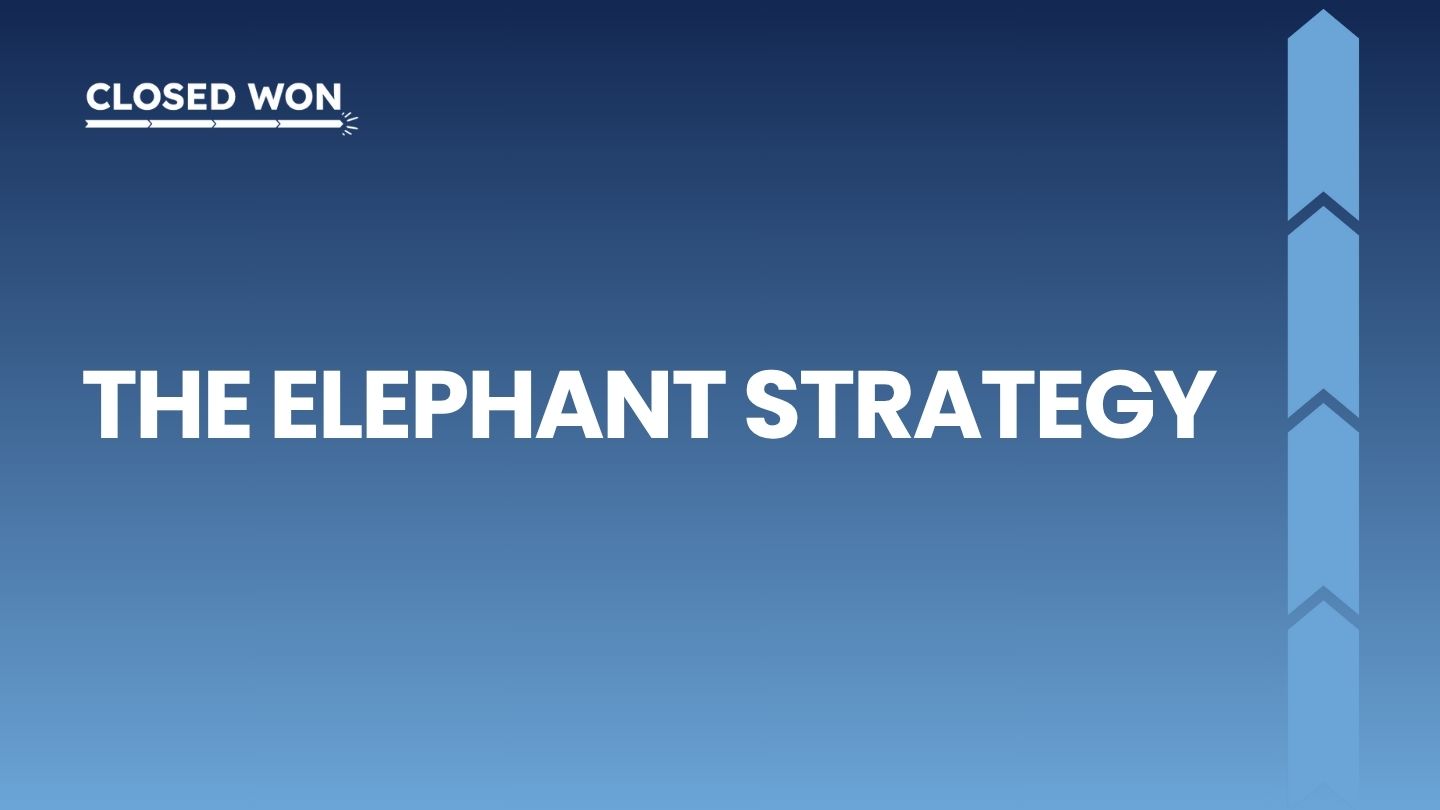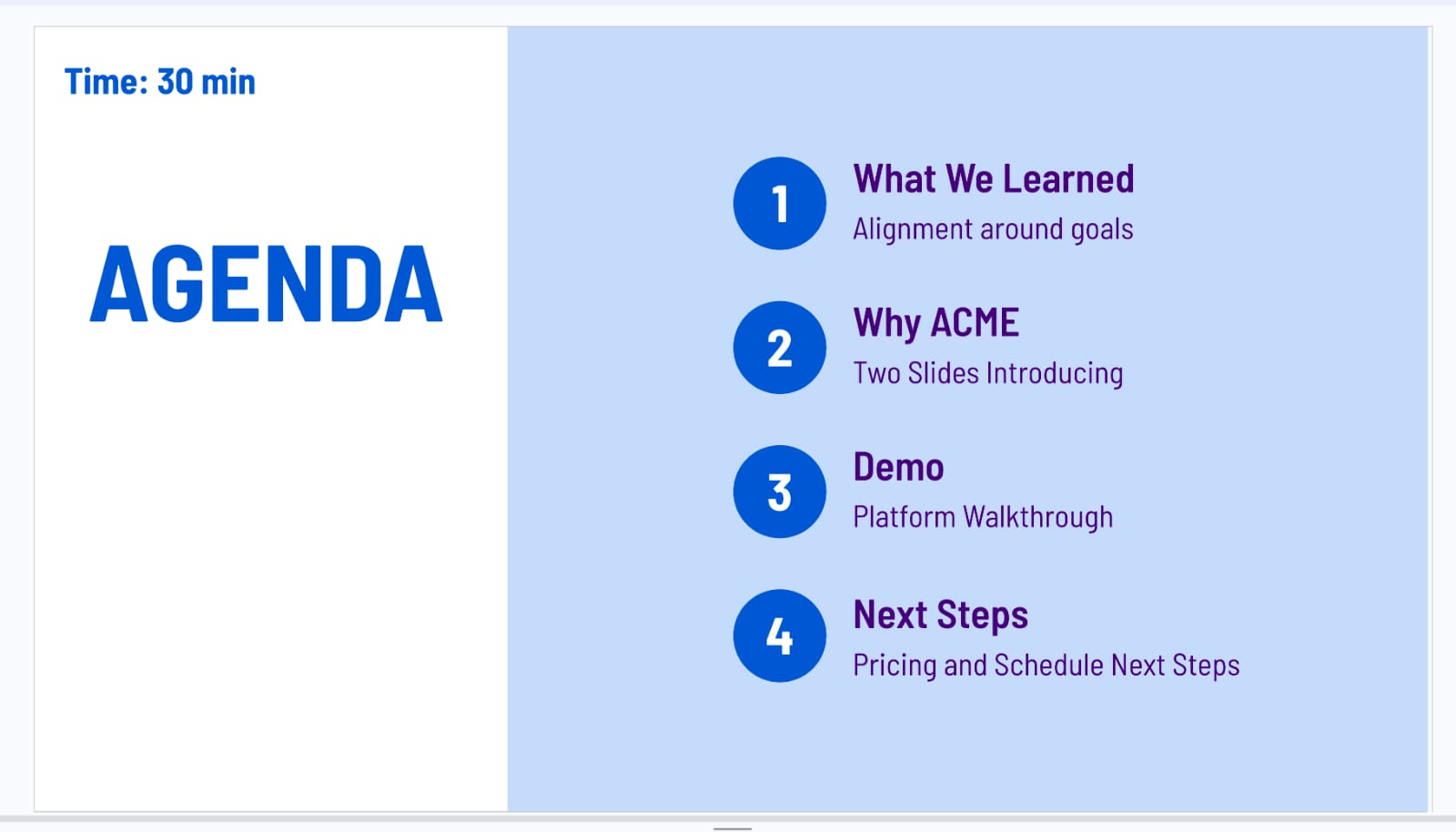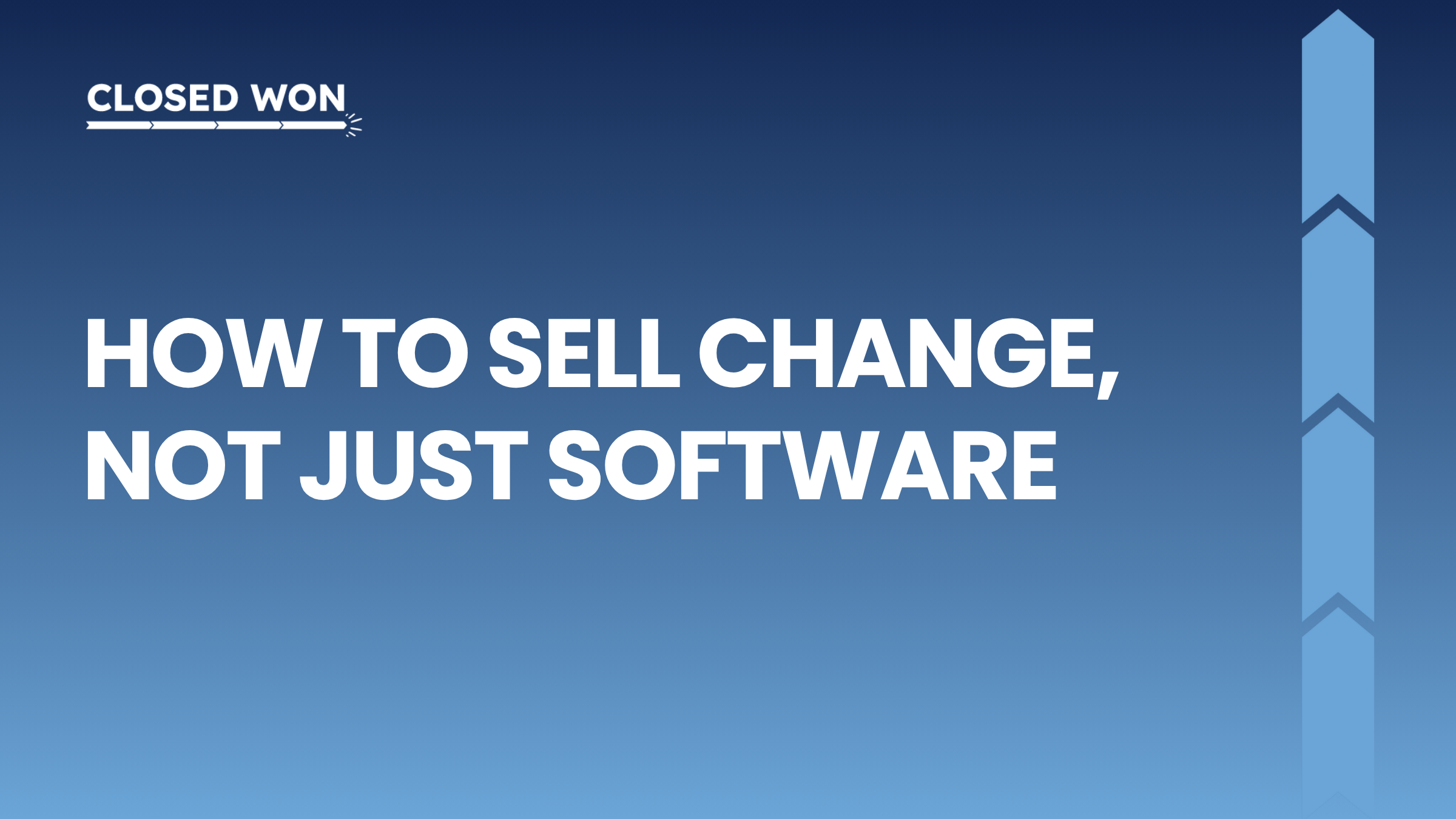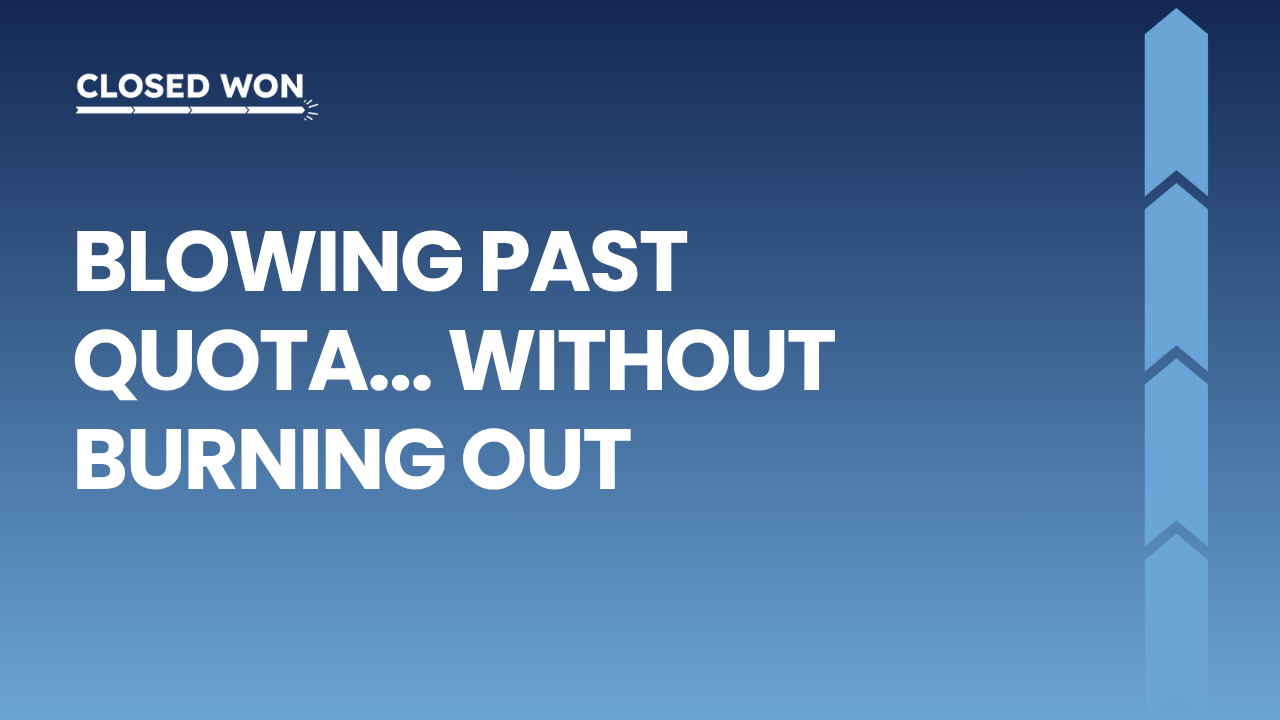The S&P 500 and Nasdaq closed Friday at all-time highs.
NEWS TO KNOW
The war seems over, inflation is slowing, and a rate cut likely in July
Just wonder what the next surprise is for us?
📚 – The 3 value buckets execs exclusively care about
BEST FROM LAST WEEK
📝 – 5 copy/paste permission cold call openers
💸 – Your prospect doesn’t care you’re the ‘new’ AE to the account
The Elephant Strategy
Why Great Sellers Call Out Deal Risks (Instead of Pretending They Don’t Exist)
Picture this: you’re in your deal review, and everyone’s talking around the obvious problem.
Your champion hasn’t met the CFO yet.
Three key stakeholders are still MIA.
The prospect keeps saying “everything looks great” but hasn’t asked a single hard question.
Sound familiar?
Here’s what I’ve been working on with my Enterprise Sales leader to kick off 2025: strategically calling out the elephant in the room.
Because here’s the thing…we usually know what the real risks are. We just dance around them like they’re radioactive.

Sense It, Say It, Solve It
[Framework]
Step 1: Sense It
In your next deal review, ask yourself: “What’s the thing I’m secretly worried about but haven’t brought up with my prospect?”
Common elephants lurking in deals:
- Missing executive alignment
- Incomplete stakeholder buy-in
- No competitive evaluation (too easy = red flag)
- Known product gaps
- Blown timelines with no accountability
Step 2: Say It
Here’s the magic formula: Lead with why it matters to THEM, not to your deal.
Instead of: “We need to get your CFO involved to move this forward.”
Try: “I’m noticing we haven’t connected with your CFO yet. In deals like this, finance typically has questions about ROI that surface late in the process. Would it make sense to get 15 minutes with them now to address any concerns upfront?”

Step 3: Solve It
Work together on the solution. Don’t just point out the problem—be the person who helps fix it.
Real Examples from the Trenches
The Missing Stakeholder Elephant:
“Sarah, I’ve been thinking about our implementation timeline. We’ve got strong support from your team, but I haven’t heard much from the IT security group. In similar rollouts, security concerns that come up late can add 2-3 months to the process. Should we loop them in now?”
The Too-Easy Deal Elephant:
“This might sound weird, but I’m a little concerned that this feels too straightforward. Most companies in your situation evaluate 2-3 options before making a decision. Have you looked at any alternatives? I’d rather know what you’re thinking now than be surprised later.”
The Product Gap Elephant:
“I want to bring up something that might come up in your final evaluation. Our reporting dashboard doesn’t have the real-time analytics feature you mentioned. Here’s how our other customers typically handle this, and here’s what we’re building for Q2. Let’s talk through whether this is a dealbreaker or something we can work around.”
Why This Actually Works
For your prospect: You become the trusted advisor who’s looking out for their success, not just pushing for a close.
For your deal: You flush out real objections while you can still address them, instead of getting blindsided at the finish line.
For your relationship: Your champion starts seeing you as the person who helps them avoid landmines, not create them.

The Mindset Shift
Here’s the counterintuitive part: friction in a deal isn’t bad. It’s information.
A deal with zero friction usually means you’re missing something important, or you’re not talking to the real decision-makers.
When you call out the elephant, you’re not creating problems…you’re surfacing the ones that already exist so you can actually solve them.
Your Action Plan for This Week
Pick one deal where you’ve been avoiding a difficult conversation. Before your next prospect call:
- Identify the elephant: What’s the thing you’re worried about but haven’t addressed?
- Reframe it: How does this risk impact THEM, not just your deal?
- Bring the solution: Don’t just point out the problem, come with ideas to fix it.
Remember: your prospects respect honesty way more than they respect false confidence. The sellers who win are the ones brave enough to have the real conversations.
Call out the elephant. Your deals (and your prospects) will thank you.

Fun Fact: Elephants are the largest land mammals and are known for their impressive memories.
They can recognize individuals they haven’t seen in years.
Meanwhile, I can’t remember someone’s name that I’ve already asked 3 times.
What’s the biggest elephant you’ve been avoiding in your current deals? Hit reply and let me know. I read every response.
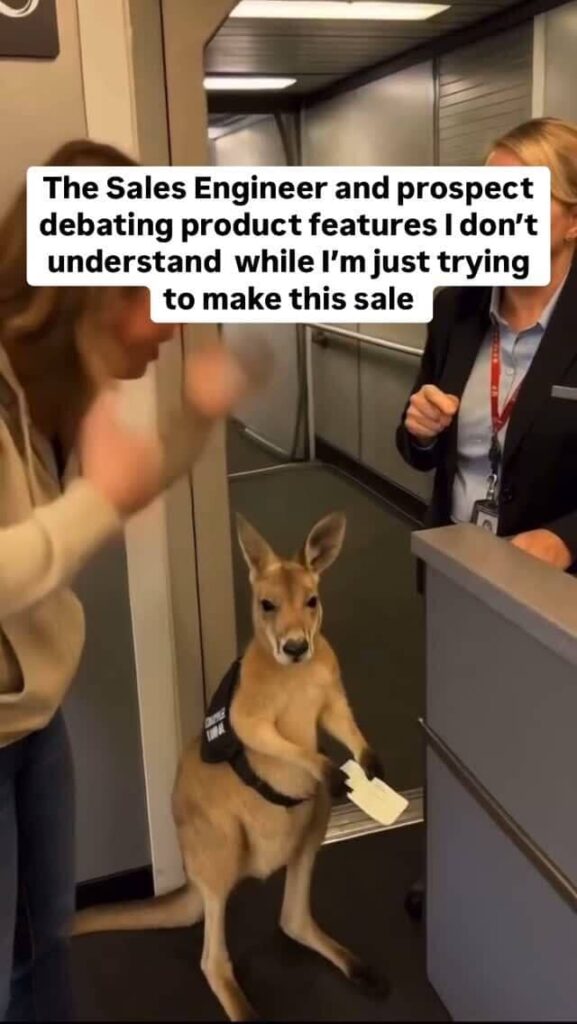
Wishing my American friends a happy (and safe) July 4th!
Come back with 10 fingers, please…

